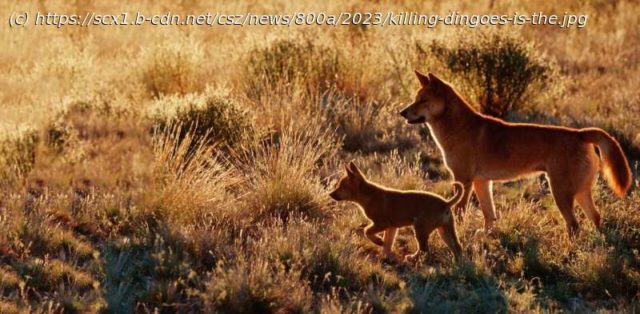Since European colonization, farmers have often viewed dingoes as the enemy, waging war against them to protect their livestock. Farmers felt they had no option but to eradicate dingoes using traps, shooting, poisoned baits (such as 1080) and building a 5,600km long dingo fence, the world’s longest.
Since European colonization, farmers have often viewed dingoes as the enemy, waging war against them to protect their livestock. Farmers felt they had no option but to eradicate dingoes using traps, shooting, poisoned baits (such as 1080) and building a 5,600km long dingo fence, the world’s longest.
Killing dingoes costs millions of dollars each year. But it hasn’t resolved the conflict. In many cases it has made the threat to livestock worse by breaking up dingo families and removing experienced adults which hunt larger, more mobile prey.
The alternative? As some farmers are discovering, there are unexpected benefits of learning to coexist with dingoes instead. As Western Australian cattle grazer David Pollock told us:
„I reckon my dingoes are worth $20,000 each, probably more. So, killing them would be the last thing that I did.“
Yes. In many cases, they can be allies for grazers by reducing the competition for pasture from wild herbivores such as kangaroos and goats, as well as killing or scaring off foxes and feral cats.
As our understanding of the importance of predators has grown, a new approach has taken root: human-wildlife coexistence. Recently recognized by the United Nations Convention of Biological Diversity, this field offers a path to stem the global loss of biodiversity by balancing the costs and benefits of living alongside wildlife.
Our new research lays out seven pathways to shift from the routine killing of dingoes towards coexistence.
One path to coexistence is supporting grazers to adopt effective tools and strategies to reduce the loss of livestock while capitalizing on the benefits of large predators.






